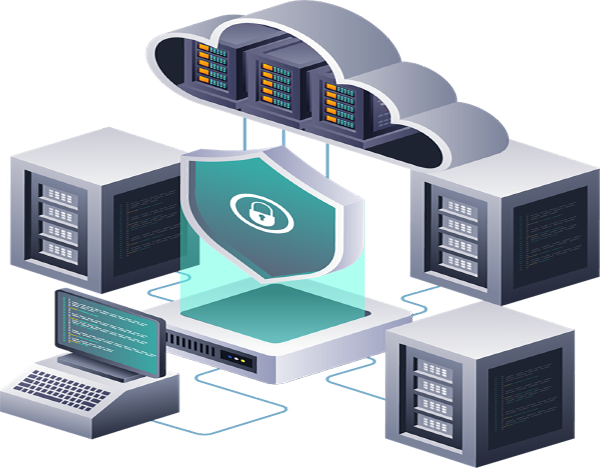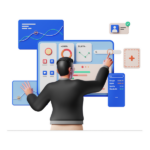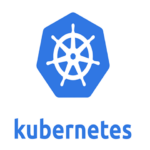Insights from a Software Engineer, Enterprise Architect, and Cybersecurity Professional
We are in a hyper-connected digital landscape, where remote work and hybrid environments are the norm, endpoint security has become a critical pillar of cybersecurity. As a Software Engineer, Enterprise Architect, and Cybersecurity Professional, I’ve observed the escalating complexity of securing endpoints, particularly as organizations navigate increasing threats in an expanding attack surface.
Endpoint security isn’t just a checkbox for compliance; it’s a dynamic necessity that demands robust strategies and constant vigilance. Let me share insights into its significance, challenges, and practical solutions through the lens of my multifaceted roles.
Why Endpoint Security Matters
Endpoints ranging from laptops, smartphones, and IoT devices to cloud-based virtual workspaces serves as gateways to an organization’s network. Each device is both a productivity enabler and a potential vulnerability.
Cybercriminals exploit endpoints to launch ransomware, phishing attacks, and data breaches. Research consistently shows that endpoints are among the most targeted entry points for attackers. Given this reality, securing endpoints is not just about protecting devices but safeguarding the organization’s entire ecosystem.
Software Engineering Perspective: Building Secure Applications
As a software engineer, I see endpoint security as an integral part of application development. Writing secure code is the foundation:
- Input Validation and Sanitization
- Preventing vulnerabilities like injection attacks starts with rigorous validation of all input data. Tools such as static code analyzers can identify potential flaws early.
- Encryption and Secure Communication
- Secure applications prioritize encrypted data exchange using TLS protocols and cryptographic standards to protect sensitive information between endpoints.
- Zero Trust Implementation
- Embedding the principle of “never trust, always verify” ensures applications authenticate users and devices at every interaction, reducing the risk of unauthorized access.
Incorporating secure development practices (e.g., OWASP standards) not only strengthens endpoint defenses but also enhances user confidence in the systems we create.
Enterprise Architect’s Perspective: Designing Resilient Systems
- Scalable Security Frameworks
- Leveraging frameworks like TOGAF, I advocate for integrating security policies into the architecture development process (ADM). By embedding security at the design stage, we can build systems that are resilient and adaptive to emerging threats.
- Cloud and On-Premise Alignment
- Many enterprises operate hybrid environments. Designing endpoint protection that seamlessly integrates cloud-based security measures, such as Azure Defender or AWS Shield, with on-premise controls ensures comprehensive coverage.
- Microservices and Container Security
- As applications evolve into microservices, securing each container becomes critical. Tools like Kubernetes-native security policies and container scanning ensure endpoints within these architectures are protected.
By building security into enterprise architecture, organizations can better align their technical infrastructure with strategic goals, reducing both complexity and risk.
Cybersecurity Engineer’s Perspective: Proactive Defense
As a cybersecurity engineer, my focus shifts to implementing endpoint security technologies and ensuring continuous monitoring and response:
- Endpoint Detection and Response (EDR)
- Solutions like CrowdStrike and SentinelOne provide real-time monitoring, detection, and remediation capabilities. EDR platforms empower teams to respond proactively to threats before they escalate.
- Behavioral Analytics
- Leveraging AI-driven tools, we can identify anomalous behavior on endpoints. For example, a sudden spike in file encryption processes might indicate ransomware activity, prompting immediate containment measures.
- Secure Access Service Edge (SASE)
- Combining network security and SD-WAN, SASE frameworks provide secure access to applications regardless of the user’s location, fortifying endpoints against vulnerabilities.
- Zero-Day Threat Mitigation
- Implementing solutions that employ machine learning and threat intelligence enhances our ability to identify and neutralize unknown threats targeting endpoints.
Endpoint security is not static; it requires continuous tuning, adaptation, and the integration of emerging technologies to stay ahead of adversaries.
Fundamental Challenges in Endpoint Security
While tools and frameworks abound, there are significant challenges in achieving robust endpoint security:
- Diversity of Devices: The proliferation of IoT and BYOD policies expands the attack surface.
- Human Error: Employees may inadvertently compromise security through phishing or weak credentials.
- Resource Constraints: Balancing robust security with device performance and user experience can be a delicate task.
- Evolving Threat Landscape: Attackers are constantly innovating, requiring an equally agile defensive strategy.
Addressing these challenges demands not only technical expertise but also collaboration across departments and ongoing user education.
Recommendations
Organizations can enhance endpoint security by implementing these strategies:
- Adopt a Zero Trust Model: Continuously verify users and devices before granting access.
- Enforce Multi-Factor Authentication (MFA): Protect endpoints with layered authentication methods.
- Educate Users: Conduct regular training on recognizing phishing attempts and adhering to security policies.
- Deploy EDR Solutions: Monitor endpoints for real-time threat detection and response.
- Patch and Update Regularly: Ensure devices and software are updated with the latest security patches.
Take Action Now!
As someone deeply invested in software engineering, enterprise architecture, and cybersecurity, I believe endpoint security is more than a technical issue .It’s a shared responsibility. Developers, architects, and security professionals must work hand-in-hand to ensure that every endpoint becomes a stronghold rather than a vulnerability.
The cybersecurity battlefield is constantly shifting, and staying ahead requires not only robust technologies but also a culture of security awareness. Let’s take proactive steps to secure our endpoints and, in doing so, protect the future of our digital enterprises.



